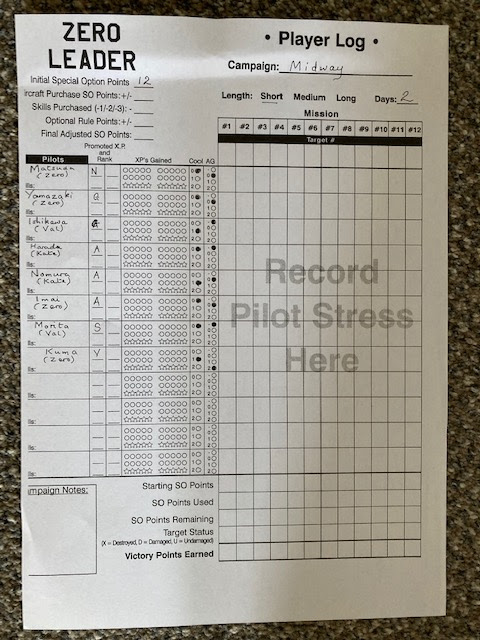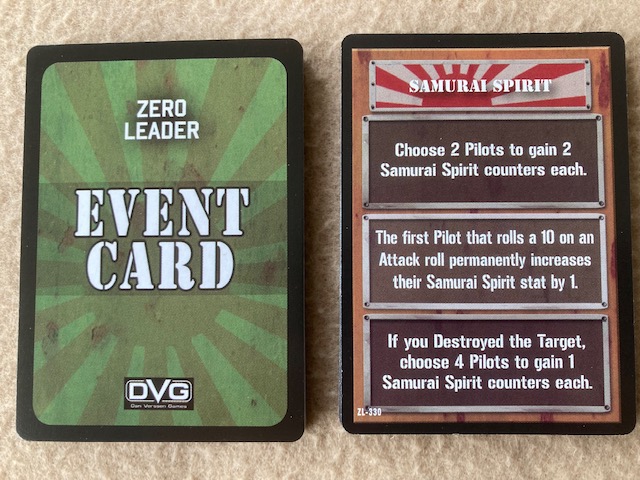Fortress Games Talks About Their Games and Themselves
"Fortress Games was a product of two things: what I thought was a revolutionary board game combo, and…Covid, lol.
Sitting around the house or just walking around the block here in Florida during early 2020 while restaurants, stores, and just about everything else was closed, I decided to dedicate a bunch of time to developing a solitaire game about the 8th Air Force’s bombing campaign against Germany in WW2. I’d always loved Avalon Hill’s “Luftwaffe” as a kid – preplanning your bombing missions and then executing them – but the game had several fatal (in my opinion) flaws: needing to chart out the missions with a pencil and pad each campaign turn, requiring all Luftwaffe planes of the same type to land at the same time (probably to save bookkeeping time on airborne German fighters), and other issues. There was for me a truly eureka moment on a walk around the block one day when I realized I had the solutions to all those issues and could build a great solitaire game. At the time, I assumed it would be another game for my and my friends’ entertainment.
A brief detour to disclose a little about me – I’ve designed games since I was a young kid. I definitely had a bit of a knack for it: when I was in college in the early 80s the war in El Salvador was in the news every day, so I designed a game about it and put it in the common area of my dorm. For the whole year you’d never walk in there without two kids playing it and others watching and commenting. Based on its success I designed a Vietnam game which was equally popular. With more titles in mind, we contemplated launching a game company to compete with Avalon Hill, SPI, etc. after we graduated but, upon doing a little research, realized that logistical work of starting a game company – lawyers for copyrights, trademarks; vetting artists; finding printers who could print all the game elements including printed and punched counters (good luck on that in 1983) – the whole thing was overwhelming for a bunch of 22 year olds, and we passed.
Fast forward to 2020 – all those things are easy (or easier) thanks to the internet! So, I had designed “8th Air Force” for my own amusement. In the process, I designed “20th Air Force” because it was a logical twin game. No one has done a game of the strategic bombing campaign against Japan that culminated in the atomic bombings of Hiroshima and Nagasaki, and the “8th Air Force” game system worked perfectly and the two campaigns were different enough that both games were unique. By the way, both games are seriously fun! I’ve designed dozens of games in my life, and I’ve enjoyed and developed them all to some extent or another, but I’d never designed a game as great as “8th Air Force” (and “20th Air Force”, but I give founders credit to “8th Air Force” because it was the desire to recreate that campaign that created all the concepts). Talking to some friends about it one day I was told why don’t you publish them? After an evening of discussing it I realized that, in 2020, that might actually be doable!
We launched our Kickstarter campaign in September, 2020 and sold $8,700 worth of folio games. While dedicated to delivering quickly and with quality to our customers, I nevertheless considered this likely a hobby of sorts, not a business, but the games got GREAT play reviews. Next thing I knew we completely sold out our inventory, just weeks after the KS campaign was fulfilled! Our customers had to wait weeks for our second, much larger print, and it sold like crazy. I realized I had an actual business.
Our next offerings were “Save Afghanistan, Comrade!” and “Save South Vietnam!” – again twin solitaire folio games, in a Kickstarter campaign which started October, 2021. We learned a lot from our first publications and I would venture that the component quality (game board and counter art, game manual structure, etc.) of these games were leagues superior to our first two offerings. This time we sold $9,000 worth of games and, again, sold out our inventory after the KS – this time I was a little ahead of the game and had restocked my inventory with a handful of games left in stock. A little background on the games, because how could we develop and playtest, etc., two new games that fast? They were already completely done. I designed them, “Save Afghanistan, Comrade!” first, around 2001 and had been playing ever since. I chose these themes because in 2001 I wanted a game about the Soviet war in Afghanistan and there simply was none. Similar to 8th AF & 20th AF, when I had designed “Save Afghanistan, Comrade!” and was thoroughly enjoying it, I realized the system leant itself perfectly to the US adventure in Vietnam and designed that game probably in 2002. At that time, I never even considered publishing them for the same reasons my college friends and I never launched in 1983. But after the success of 8th AF & 20th AF, especially with what I learned publishing them, it was pretty easy to get a fully designed and play tested game system published. The work was in the art and writing the game manual, but it’s nice to start with a fully developed system.
Finally, the high quality of the artwork in the “Save” game series compared with the “Air Force” series made me a little embarrassed at our first publication. In our defense, we were new and inexperienced when we launched 8th AF & 20th AF, and the game play received GREAT reviews and required no errata, but the component quality of these two great games was no longer acceptable. So, our last Kickstarter (January, 2023) was a complete redo of those two games: in shrink-wrapped BOXES not folios, on MOUNTED game boards no cardstock, laser-cut super-high-quality counters, all new game board player aid and counter artwork, and completely redone rulebooks including countless illustrations and illustrated examples. While our first two KS campaigns did about $9k each, this one did $38k, and the sales have been pouring in ever since. By the way, I tried very hard to take care of the original KS backers of 8th AF & 20th AF – if you were an original backer you got both games for $59, or $29.50 each. We sell them post-KS from our website for $69 each, or $139 for both. I went over my philosophical approach to our original supporters in an interview I did with the “Lead Pursuit” podcast which I have a link to on our website (click “News”, scroll down to 3/1/2023).
We currently have two more twin solitaire games in the works, but while the first one is very well along (90%, including fully playtested), the second one has lots of work ahead, including lots of playtesting, so it’s hard for me to imagine publication before mid-late next year. Again, we’ll launch them on Kickstarter."
Thank you very much for this look under the hood, so to speak.
Fortress Games: Fortress Games – The Art of Wargames (fortress-games.net)










































.jpg)
.jpg)
.jpg)

Follow Us